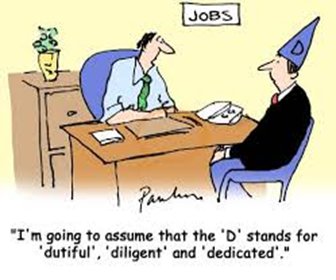25/08/2015
HR needs to carry out the function of job profiling, ensuring these are up to date and adding value to the organisation – not hindering it.
By: Rita Lally
 Job Analysis is a critical skill for all Human Resources professionals and is used when writing Job Descriptions, Person Specifications and/or Performance Models. The uses and value of the ‘profile’ impact on all aspects of the day to day operations and services offered by the Human Resources Department.
Job Analysis is a critical skill for all Human Resources professionals and is used when writing Job Descriptions, Person Specifications and/or Performance Models. The uses and value of the ‘profile’ impact on all aspects of the day to day operations and services offered by the Human Resources Department.
From the outset, an updated ‘person specification’ reflecting what is required by the applicant of a job is essential at the recruitment and initial entry level into the organisation to ensure a good ‘fit’. The Employment Equity Act amendments, and Code of Good Practice requirements, states that ‘job descriptions are to be updated each time there is a vacancy.” As a result, all HR partners are expected to review and make corrections where necessary. Outdated documents can result in mismatches and poor appointment decisions. We all know how costly it can be to the organisation when this happens - up to 10% of annual salary when recruitment goes wrong!
Currently, the skills development plans and reports are being consolidated for submission into the SETA’s. As training in itself is a costly exercise (in addition to the Levies already paid), the data collated from job profiles must be meaningful. Training plans are drawn from the necessity to upskill people at technical and professional levels, through to identifying personal development needs, or gaps in performance expectations of individuals. If there aren’t comprehensive job profiles in place – where does the information then come from? ...
The Skills Development Act has clear intentions. Training plans should be strategic in nature; fair for everyone; dovetail with the employment equity goals and add value to the business. Without job profiles, how does one define what needs to happen for individuals to grow, and in turn, move up the ladder within the organisation? It is not only about providing qualifications, development activities should be carried out in a variety of forms and holistic in nature to align with the future targetted position – again, outlined in the ‘profile’...
We would all love to work in an ideal world, but sadly this does not happen and there are those that despite efforts by management – simply do not make the grade. Job profiles facilitate performance management. Objective feedback of the shortfall must be given prior to any formal corrective action or discipline. This cannot happen unless the job profile is up to date and clear in its intent. How often does one hear the remorseful response from an employee, “I didn’t know, or nobody told me”... down to Mr. CCMA if unfair labour practices take place.
Employers have added responsibilities under the Employment Equity Act amendments ...‘equal pay for equal value’. If your job profiles cannot objectively show the justification in different remuneration for similar work, or levels of authority, make sure you have a recognised grading and evaluation system in place. Organisations can be challenged if salaries are not aligned, especially if deemed to be discriminatory.
Job Profiling is a Key Responsibility Area of Human Resources Professionals, the results of which align with and support the business strategy through effective manpower planning and talent management. HR needs to carry out the function of job profiling, ensuring these are up to date and adding value to the organisation – not hindering it.
Failing all else, attend our training workshop or let us help you put them in place.